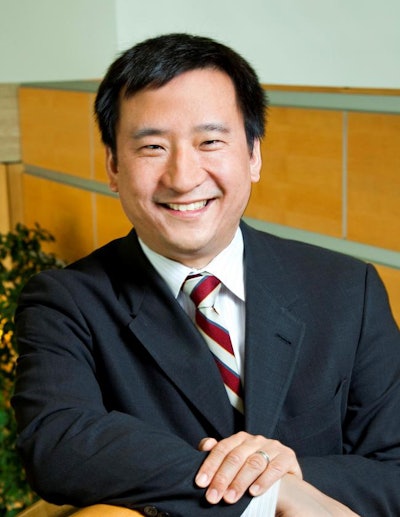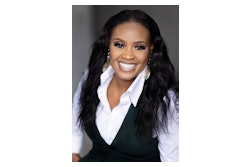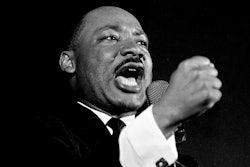This is a briefing for higher education professionals about Asian Americans. It is intended to offer an overview that is sympathetic, at the risk of generalizing. Although Asian Americans appear overrepresented on campuses by some measures, they also face challenges. Ironically, the very assumption of great success academically can cause complex problems socially and politically.
Most importantly, the Asians who are students and faculty span a range. Some are Californians whose forebears built the transcontinental railroad which was finished in 1869 or New Yorkers through and through who were born and raised in the same borough as where their parents ran a restaurant. Asians who are less assimilated call Asians who are more assimilated “bananas,” yellow on the outside, white on the inside — a term belonging to the category that does not have identical implications used on one’s self versus used by outsiders. Others are foreign nationals who would not wish to be deemed either “Asian” or “American,” because they have ethnic pride for a nation to which they will return when their studies are done. Still others are “fresh off the boat” in that pejorative phrase reclaimed thanks to a hit television show, or the so-called “1.5 generation” who came when they were young enough to adapt to a new environment but old enough to be influenced by the memories of an ancestral homeland.
None of this is unique. African, African immigrants and their American-born children, and African-Americans born of African-Americans whose roots date back before the Civil War may have dissimilar attitudes.
Thanks to globalization and technology, transnational identities and relationships are not rare. The population capable of true bilingualism, enough to pass as a native speaker in both tongues, is increasing. A student who moves to San Francisco for a semester of study can still keep up with a boyfriend back in Shenzhen. They belong to an ascendant Asia, newly empowered. Through social media, they can continue to enjoy one another’s company. They have choices about where to belong.
That means that the lines between Asians and Asian Americans can be blurred. Everyone can enjoy “K-Pop” and “gangnam style.”
 Frank Wu
Frank WuThe fastest growing minority group, Asian Americans are comprised of many ethnicities that might not have deemed themselves to share an interest but for the official designation. The most numerous half dozen origins are, in order: Chinese (about a quarter of all Asians in America), Indian, Filipino, Vietnamese, Korean, and Japanese. There are many internal distinctions. Among Chinese, for example, the mainland, Taiwan, and Hong Kong, or elsewhere such as Australia, are all quite different starting points for immigration; and Mandarin and Cantonese languages, despite common characters for writing, are mutually incomprehensible when spoken. Filipinos include many Catholics; Koreans, Protestants.
Under the rubric Asian American are many sub groups. Thousands of adoptees, almost all female, have come from all over, raised in white families. They have “white” surnames, and it would not be unusual to have had a bat mitzvah, the Jewish coming-of-age ceremony. Thousands of “hapa,” a Hawaiian word for “half,” can boast of mixed lineage that in their grandparents’ generation might have been a source of shame. Afro-Asians or “Blasians” include communities such as the Jamaican Chinese.
For those who would embrace the Asian American “movement,” there are themes uniting their experiences. In the field of Asian American Studies, these concepts are at the core of the curriculum.
Perhaps the most basic idea is the insistence on a paradigm of race that is “beyond Black and White.” Asian Americans often express frustration about a figurative exclusion that followed their literal exclusion. Regardless of their partisan political affiliation, they would like to have a voice, a seat at the table, and otherwise participate as equals. They are especially upset that they can be used as representatives in marketing claims about diversity, but then not counted as minorities in actual programs such as for scholarships.
Asian Americans fight against “the perpetual foreigner syndrome.” That is the sentiment that no matter how much they try to be American — or in fact have always been American — they must be secretly loyal to another nation. The suggestion to some Asian Americans to take opportunities for proving their patriotism is to them only another infuriating indication that they face bias. They are being told they, unlike others, need to overcome doubt about the matter.
The most difficult prejudice to respond to, however, appears positive, “the model minority myth.” The notion that Asian Americans are whiz kid rocket scientists who graduated from high school at fourteen as valedictorian, with perfect test scores, while being concert pianists, with parents who beat them for an A-minus, etc., has that germ of truth that is exaggerated and distorted. It takes away nothing from those who deserve applause for their achievements to point out the dangers of the image: it is inaccurate as to many who are suffering but whose need is dismissed with the sentiment all Asians are doing well; it generates its own racial resentment about an Asian invasion and Asians taking over schools; and it is abused to compare Asian Americans to African Americans and others, for the none-too-subtle message, “They made it; why can’t you?”
This is merely an overview. Asian Americans are as different from one another as they are the majority or other people of color. Yet that means Asian Americans have as much in common with everyone else, too.
Frank H. Wu is the William L. Prosser Distinguished Professor at the University of California Hastings College of the Law. This summer he will assume the presidency at Queens College in New York. You can follow him on Twitter@frankhwu


















